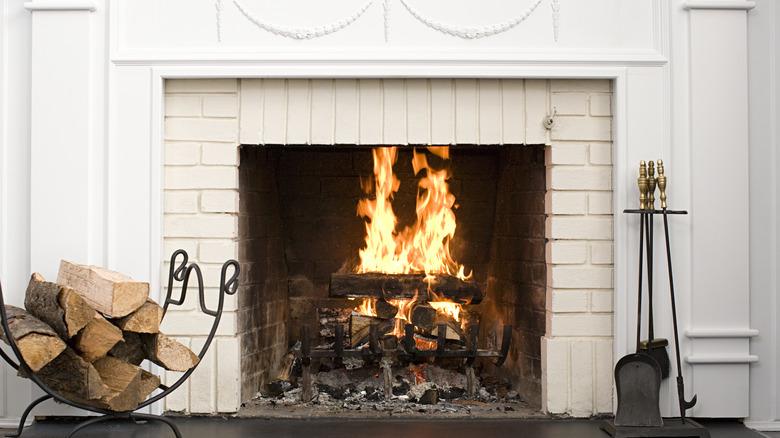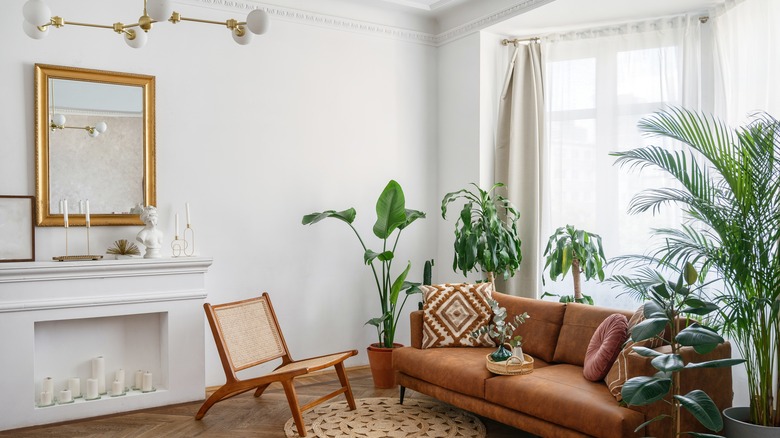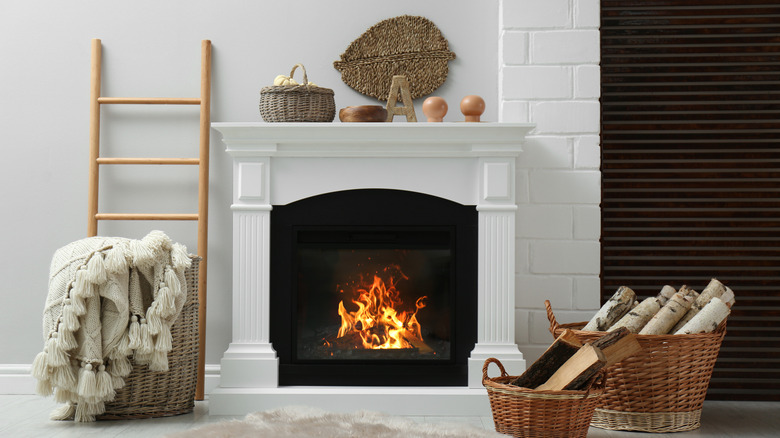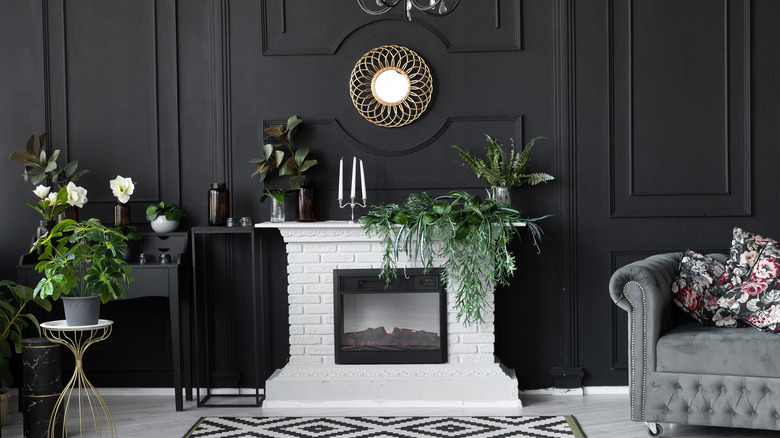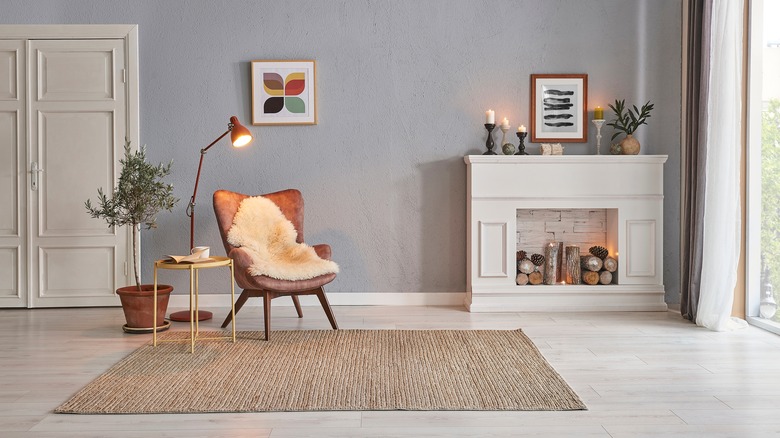A Design Expert Explains The Best Way To Style A Fireplace Mantel
Fireplaces are common in many homes across the U.S. — they form a central design feature in properties located in cold regions, and are still popular in warmer climates, even though the homeowner may not actually use the fireplace for warmth. Still, the mantel is a visual focal point in any room and home that's lucky enough to have one.
Statista reports that fireplaces have experienced a resurgence in interest among builders and homebuyers, with roughly 330,000 new homes built with at least one fireplace in 2017. And for those living in a property that was built before 2005, the chances are increasingly likely that your home includes this feature.
In an exclusive interview with House Digest, Samantha Black, an interior designer with Freemodel, offers some useful advice for styling your fireplace mantel — this central feature deserves energy and attention, and with the right additions and decorations it can truly shine.
Use a mirror
Mirrors are a great asset in many home design elements. They come in a wide variety of designs as well, making them the perfect addition for many decorative styles — for instance, if you're going for a modern, rustic, or even gothic overtone in the room. The natural layout of a fireplace and mantel lend themselves perfectly to the use of mirrors and other, similar features.
Black notes that "most mantles have wall space above them; in some cases, this could be a very tall or even vaulted ceiling area. This is an opportunity to show off an art piece, a large photograph, or even a large mirror. A mirror will add vastness and reflected light to your space, allowing your room to feel larger and more spacious."
There are many ways to get creative above the mantel, and Black notes that mirrors are only a starting point. She suggests that "you can also utilize this space for a gallery wall displaying various sizes of framed prints, photos, and mirrors." This space truly works as a blank canvas for any type of decorative addition that you can imagine.
Show off your collection
The mantel is also a great space for showcasing decorative collections. "Whether you collect Jadite glassware or Balkan Matryoshka dolls, give your treasures a chance to shine," says Black. As it is often centrally located and features a nearly purpose-built display shelf that lies at eye level, the mantle is the ideal focal point in the room. Black continues, noting "like most display opportunities in your home, think of using various heights, cases, and platforms."
She says, "wooden pedestals and glass cases can provide added dimension and also act to protect your valuables in a stylish way; think of a glass cloche over your grandfather's old pocket watch." A stack of books, decorative wooden features, or even delicate China plates can be displayed on the mantel or near the hearth. This is a great way to add visual depth to the room and to provide height differentials in your decorating.
Add lighting and candles
When in use, the fireplace that lies beneath your mantel will naturally add ambient lighting to the room. But this isn't the only light source that you should feature in this area. Black says, "your mantle space is a great opportunity to have ambient lighting. Consider multiple heights and sizes of candles and candle holders to enhance the area's natural glow. For safety purposes, try placing candles inside glass hurricanes and votive or tea lights in the cups." Candles add an immense richness to the atmosphere of any room, and the fireplace offers a natural location for a variety of candles and other lighting elements.
Black says that traditional candlelight isn't the only option here. In fact, she notes: "Many alternative LED or battery-operated candle options exist with flickering flames to give the appearance of natural light, some even with remote controls to your phone. Play around with clever lighting options." You might consider adding bulbs down at floor level inside the hearth to create a feeling of depth, or place small LEDs directly beneath the mantel to illuminate the facade up the fireplace itself.
Don't forget your hearth area
The last part of the fireplace and mantel that Black focuses on is the hearth itself. "The hearth, or lower area near the fireplace opening, is just as important for styling as the mantel over the fireplace opening," she says. The hearth may not be in use any longer, but it offers a unique opportunity to enhance to your living space. She continues, saying, "whether you have a wood-burning fireplace, a gas insert, or a decommissioned fireplace you should decorate this area to match your home's look and feel. Try various basket sizes with wood, kindling, bellows, and large matchsticks. Or fill a decommissioned fireplace with candles of various heights or a focal point fire screen as an art piece, perhaps think vintage here."
If your fireplace isn't in use, you have a plethora of options. Panadero suggests that this space could be used as a unique bookshelf addition to showcase your most admired titles, or you could paint the interior space to create a contrasting color scheme to make the area really shine. Bringing together all of Black's advice and focusing on stylistic continuity can add a unique element of class and vibrancy to your home.
